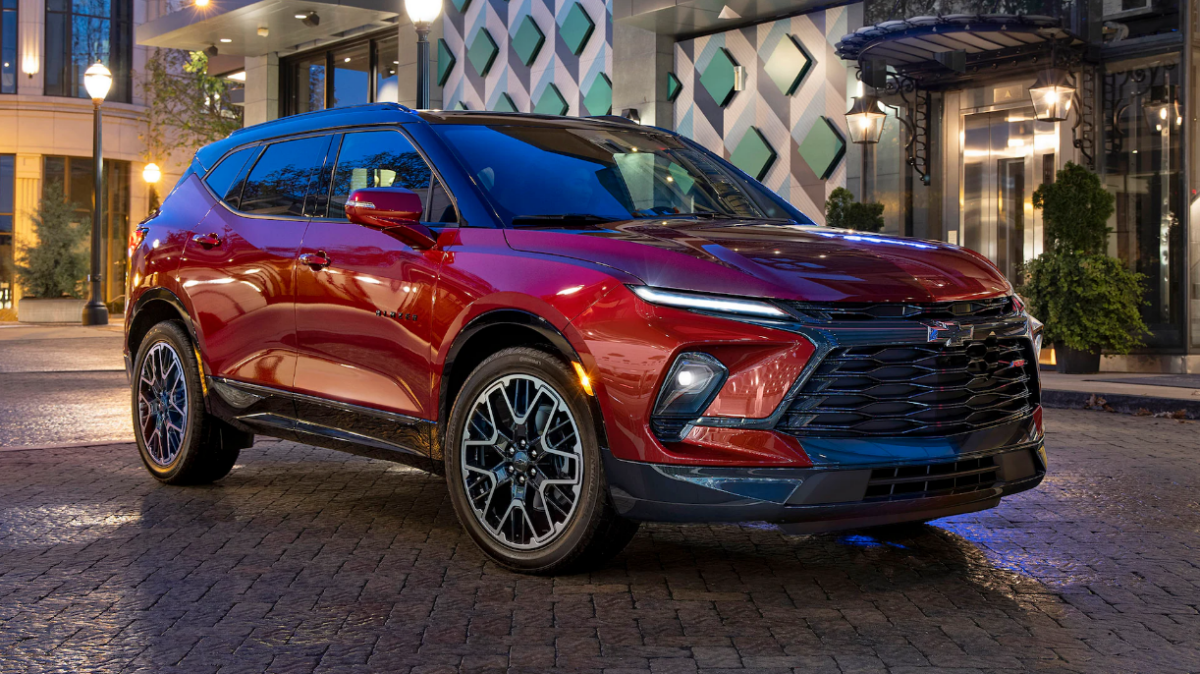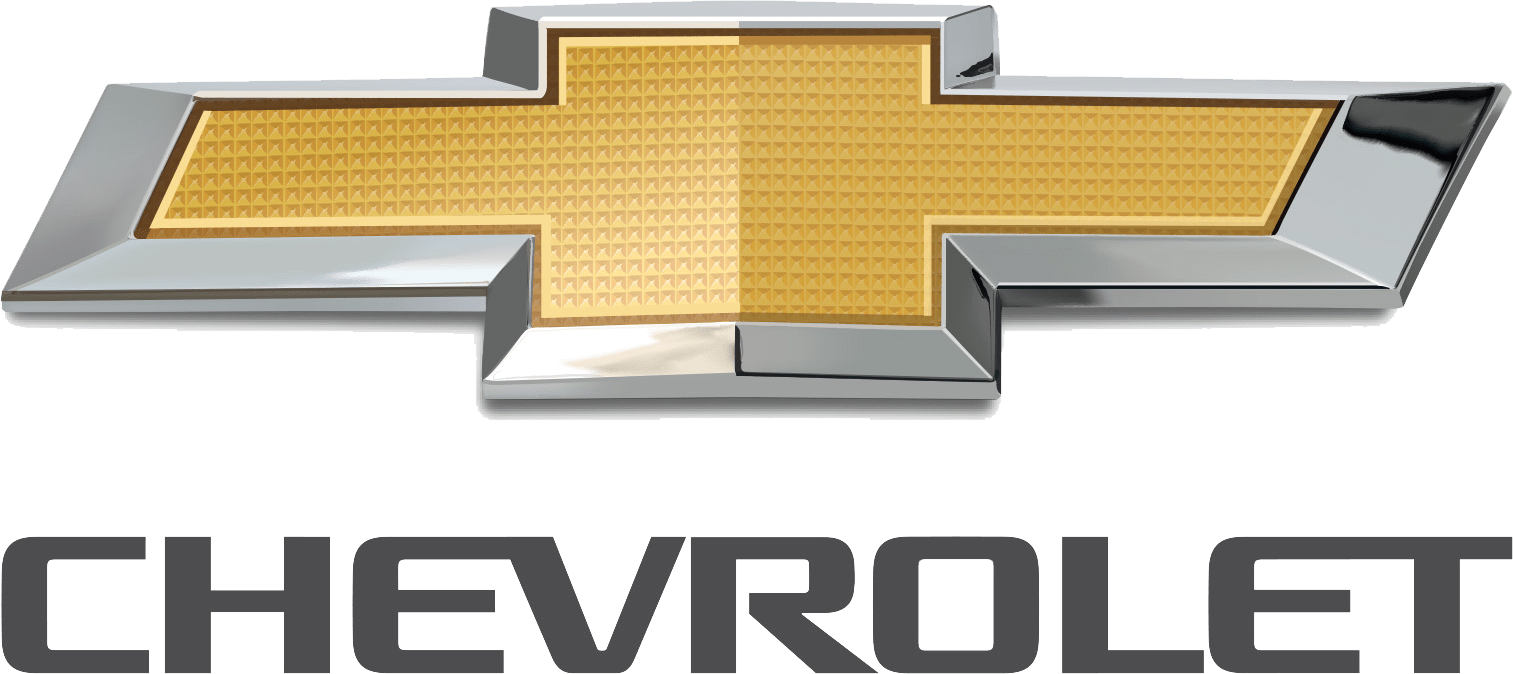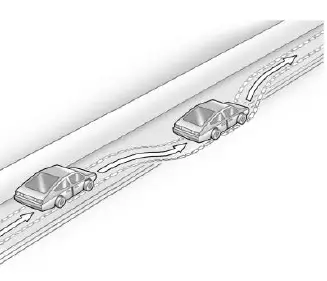Off-Road Driving: 2023 Chevrolet Blazer Driving Features User Manual
The 2023 Chevrolet Blazer is a great choice for off-road drivers who want to have fun and perform well. This tough SUV has the right mix of style, capability, and innovation, which makes it stand out in the market for off-road vehicles. The Blazer promises an exciting and Adventure driving experience both on and off the beaten road thanks to its strong build and high-tech driving features. Because it has the latest technology and safety features, this vehicle can easily go from city streets to rough countryside. The Chevrolet Blazer 2023 stands out as a useful all-around vehicle for drivers who want to explore and have fun on the road. It is one of the best off-road vehicles because it has powerful engine choices and can handle quickly. Set a new bar for off-road driving experiences, the Blazer delivers on both performance and style, whether you’re driving through rough terrain or cruising through cities.
2023 CHEVROLET BLAZER Specs, Price, Features, Mileage (Brochure)
Off-Road Driving
Off-Road Performance Owner’s Manual
The vehicle’s right wheels can drop off the edge of a road onto the shoulder while driving. Follow these tips:
- Ease off the accelerator and then, if there is nothing in the way, steer the vehicle so that it straddles the edge of the pavement.
- Turn the steering wheel about one-eighth of a turn, until the right front tire contacts the pavement edge.
- Turn the steering wheel to go straight down the roadway.
Loss of Control
Skidding
There are three types of skids that correspond to the vehicle’s three control systems:
- Braking Skid — wheels are not rolling.
- Steering or Cornering Skid — too much speed or steering in a curve causes tires to slip and lose cornering force.
- Acceleration Skid — too much throttle causes the driving wheels to spin.
Defensive drivers avoid most skids by taking reasonable care suited to existing conditions, and by not overdriving those conditions. But skids are always possible.
If the vehicle starts to slide, follow these suggestions:
- Ease your foot off the accelerator pedal and steer the way you want the vehicle to go. The vehicle may straighten out. Be ready for a second skid if it occurs.
- Slow down and adjust your driving according to weather conditions. Stopping distance can be longer and vehicle control can be affected when traction is reduced by water, snow, ice, gravel, or other material on the road. Learn to recognize warning clues — such as enough water, ice, or packed snow on the road to make a mirrored surface — and slow down when you have any doubt.
- Try to avoid sudden steering, acceleration, or braking, including reducing vehicle speed by shifting to a lower gear. Any sudden changes could cause the tires to slide.
Remember: Antilock brakes help avoid only the braking skid.
Off-Road Driving
All-wheel drive (AWD) vehicles can be used for off-road driving. Vehicles without AWD and vehicles not equipped with All Terrain
(AT) or On-Off Road (OOR) tires must not be driven off-road except on a level, solid surface. To contact the tire manufacturer for more information about the original equipment tires, see the warranty manual. Controlling the vehicle is the key to successful off-road driving. One of the best ways to control the vehicle is to control the speed.
Warning
When driving off-road, bouncing and quick changes in direction can easily throw you out of position. This could cause you to lose control and crash. You and your passengers should always wear seat belts.
Before Driving Blazer Off-Road Experience
- Have all necessary maintenance and service work completed?
- Fuel the vehicle, fill fluid levels, and check the inflation pressure in all tires, including the spare, if equipped.
- Read all the information about AWD vehicles in this manual.
- Make sure all underbody shields, if equipped, are properly attached.
- Know the local laws that apply to off-road driving.
To gain more ground clearance if needed, it may be necessary to remove the front fascia lower air dam. However, driving without the air dam reduces fuel economy.
Caution
Operating the vehicle for extended periods without the front fascia lower air dam installed can cause improper airflow to the engine. Reattach the front fascia air dam after off-road driving.
Loading the Vehicle for Off-Road Driving
Warning
- Unsecured cargo on the load floor can be tossed about when driving over rough terrain. You or your passengers can be struck by flying objects. Secure the cargo properly.
- Keep cargo in the cargo area as far forward and as low as possible. The heaviest things should be on the floor, forward of the rear axle.
- Heavy loads on the roof raise the vehicle’s center of gravity, making it more likely to roll over. You can be seriously or fatally injured if the vehicle rolls over. Put heavy loads inside the cargo area, not on the roof.
For more information about loading the vehicle, see Vehicle Load Limits 0 188.
2023 CHEVROLET BLAZER Specs, Price, Features, Mileage (Brochure)
Environmental Concerns
- Always use established trails, roads, and areas that have been set aside for public off-road recreational driving and obey all posted regulations.
- Do not damage shrubs, flowers, trees, or grasses or disturb wildlife.
- Do not park over things that burn.
Driving on Hills
Driving safely on hills requires good judgment and an understanding of what the vehicle can and cannot do.
Warning
Many hills are simply too steep for any vehicle. Driving up hills can cause the vehicle to stall. Driving down hills can cause loss of control. Driving across hills can cause a rollover. You could be injured or killed. Do not drive on steep hills.
Before driving on a hill, assess the steepness, traction, and obstructions. If the terrain ahead cannot be seen, get out of the vehicle and walk the hill before driving further.
When driving on hills:
- Use a low gear and keep a firm grip on the steering wheel.
- Maintain a slow speed.
- When possible, drive straight up or down the hill.
- Slow down when approaching the top of the hill.
Warning
Driving to the top of a hill at high speed can cause a crash. There could be a drop-off, embankment, cliff, or even another vehicle. You could be seriously injured or killed. As you near the top of a hill, slow down and stay alert.
- Use headlamps even during the day to make the vehicle more visible.
- Never go downhill forward or backwards with the transmission in N (Neutral). The brakes could overheat and you could lose control.
- When driving down a hill, keep the vehicle headed straight down. Use a low gear because the engine will work with the brakes to slow the vehicle and help keep the vehicle under control.
Warning
Heavy braking when going down a hill can cause your brakes to overheat and fade. This could cause loss of control and you or others could be injured or killed. Apply the brakes lightly when descending a hill and use a low gear to keep vehicle speed under control.
- Avoid turns that take the vehicle across the incline of the hill. Driving across an incline puts more weight on the downhill wheels, which could cause a downhill slide or a rollover.
- Loose gravel, muddy spots, or even wet grass can cause the tires to slip sideways, or downhill. If the vehicle slips sideways, it can hit something and potentially
rollover. - Hidden obstacles can make the steepness of the incline more severe. If a rock is driven across with the uphill wheels, or if the downhill wheels drop into a rut or depression, the vehicle can tilt even more.
- If an incline must be driven across and the vehicle starts to slide, turn downhill. This should help straighten out the vehicle and prevent side slipping.
If the vehicle stalls on a hill:
- Apply the brakes to stop the vehicle, and then apply the parking brake.
- Shift into P (Park) and then restart the engine.
- If driving uphill when the vehicle stalls, shift to R (Reverse), release the parking brake, and back straight down.
- Never try to turn the vehicle around. If the hill is steep enough to stall the vehicle, it is steep enough to cause it to roll over.
- If you cannot make it up the hill, back straight down the hill.
- Never back down a hill in N (Neutral) using only the brake.
- The vehicle can roll backwards quickly and you could lose control.
- If driving downhill when the vehicle stalls, shift to a lower gear, release the parking brake, and drive straight down the hill.
- If the vehicle cannot be restarted after stalling, set the parking brake, shift into P (Park), and turn the vehicle off.
- Leave the vehicle and seek help.
- Stay clear of the path the vehicle would take if it rolled downhill.
Warning
Getting out of the vehicle on the downhill side when stopped across an incline is dangerous. If the vehicle rolls over, you could be crushed or killed. Always get out on the uphill side of the vehicle and stay well clear of the rollover path.
Driving in Mud, Sand, Snow, or Ice
Use a low gear when driving in mud — the deeper the mud, the lower the gear. Keep the vehicle moving to avoid getting stuck. Traction changes when driving on sand. On loose sand, such as on beaches or sand dunes, the tires tend to sink into the sand. This affects steering, accelerating, and braking. Drive at a reduced speed and avoid sharp turns or abrupt maneuvers. Traction is reduced on hard-packed snow and ice and it is easy to lose control. Reduce vehicle speed when driving on hard-packed snow and ice.
Warning
Driving on frozen lakes, ponds, or rivers can be dangerous. Ice conditions vary greatly and the vehicle could fall through the ice; you and your passengers could drown. Drive your vehicle on safe surfaces only.
2023 CHEVROLET BLAZER Specs, Price, Features, Mileage (Brochure)
Driving in Water
Warning
Driving through rushing water can be dangerous. Deep water can sweep your vehicle downstream and you and your passengers could drown. If it is only shallow water, it can still wash away the ground from under your tires. Traction could be lost, and the vehicle could roll over. Do not drive through rushing water.
Caution
Do not drive through standing water if it is deep enough to cover the wheel hubs, axles, or exhaust pipe. Deep water can damage the axle and other vehicle parts.
If the standing water is not too deep, drive through it slowly. At faster speeds, water can get into the engine and cause it to stall. Stalling can occur if the exhaust pipe is underwater. Do not turn off the ignition when driving through water. If the exhaust pipe is underwater, the engine will not start. When going through water, the brakes get wet, and it might take longer to stop.
After Off-Road Driving
Remove any brush or debris that has collected on the underbody or chassis, or under the hood. These accumulations can be a fire hazard. After the operation in mud or sand, have the brake linings cleaned and checked. These substances can cause glazing and uneven braking. Check the body structure, steering, suspension, wheels, tires, and exhaust system for damage, and check the fuel lines and cooling system for any leakage. More frequent maintenance service is required.
2023 Chevrolet Blazer Trail-Ready Features
The 2023 Chevrolet Blazer offers several trail-ready features that enhance its performance and capability off-road. Some of these features may include:
- All-Wheel Drive (AWD Capability) System: The AWD system provides enhanced traction and stability on various terrain types, making it well-suited for off-road driving.
- Terrain Mode Selector: This feature allows drivers to adjust the vehicle’s settings based on different driving conditions, such as snow, mud, or gravel, optimizing performance for off-road driving.
- Off-Road Suspension Package: An optional suspension package may include features like improved shock absorbers, higher ground clearance, and reinforced underbody components to handle rough terrain more effectively.
- Skid Plates: Skid plates protect the undercarriage of the vehicle from damage caused by rocks, branches, or other obstacles encountered off-road.
- Hill Descent Control: This feature helps maintain a steady speed when descending steep slopes, allowing the driver to focus on steering without worrying about controlling speed.
- Trailering Package: For those who plan to tow trailers or other equipment off-road, a trailering package may include features like a heavy-duty hitch, trailer wiring harness, and trailer sway control.
- Off-Road Tires: Specially designed off-road tires with aggressive tread patterns provide improved traction and durability on unpaved surfaces.
- Locking Rear Differential: A locking rear differential can help maximize traction by sending power to both rear wheels equally, reducing the likelihood of getting stuck in challenging terrain.
- Integrated Recovery Hooks: These heavy-duty hooks are mounted to the front and rear of the vehicle, allowing for easy attachment of recovery straps or cables in case the vehicle gets stuck and needs to be towed out.
- Advanced Trailering Technologies: Features such as trailer sway control, hill start assist, and a rearview camera with hitch guidance can make towing trailers off-road safer and more manageable.
These trail-ready features enhance the Chevrolet Blazer’s capability and versatility, making it well-suited for off-road adventures while maintaining comfort and convenience for everyday driving.
FAQ’s
The 2023 Chevrolet Blazer is equipped with advanced off-road features to enhance your driving experience.
The 2023 Chevrolet Blazer is manufactured by Chevrolet, a renowned automotive company.
Yes, the 2023 Chevrolet Blazer is designed to handle rough terrains with its robust off-road capabilities.
The 2023 Chevrolet Blazer retains the Blazer model name.
Yes, the 2023 Chevrolet Blazer features specialized driving modes for off-road adventures, optimizing performance.
The 2023 Chevrolet Blazer utilizes advanced traction control systems to ensure stability on challenging surfaces during off-road driving.
The 2023 Chevrolet Blazer is equipped with off-road safety features such as hill descent control and enhanced braking systems for added security.
Yes, the 2023 Chevrolet Blazer is designed to tackle steep inclines and declines, providing a confident off-road driving experience.
The 2023 Chevrolet Blazer was released in the year 2023.
Yes, the 2023 Chevrolet Blazer features skid plates to provide undercarriage protection during off-road excursions.
The 2023 Chevrolet Blazer is equipped with advanced off-road suspension systems to handle various challenges encountered during off-road driving.
Yes, the 2023 Chevrolet Blazer includes technology features tailored for off-road navigation, enhancing the overall off-road experience.
Yes, the 2023 Chevrolet Blazer offers customizable settings to adapt to different off-road terrains, ensuring optimal performance.
Keywords such as off-road prowess, rugged terrain, and adventure-ready encapsulate the off-road capabilities of the 2023 Chevrolet Blazer.
The 2023 Chevrolet Blazer has demonstrated its off-road prowess in various events and challenges, showcasing its capability and durability in demanding environments.
Useful Links:
View Full User Guide: Chevrolet Blazer 2023 User Guide | Auto User Guide
2023 CHEVROLET BLAZER Specs, Price, Features, Mileage (Brochure)



